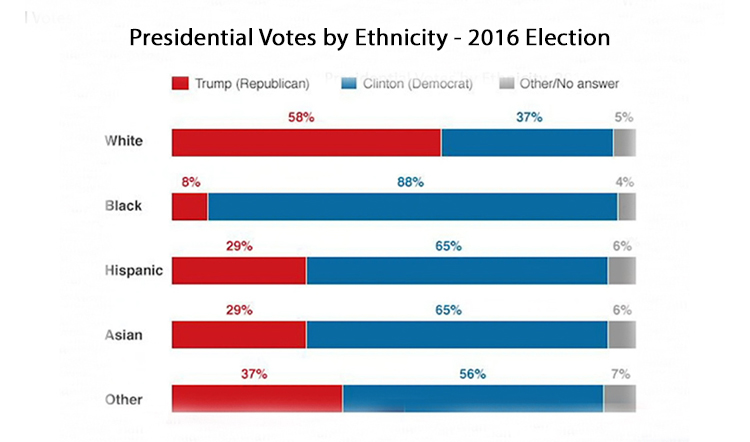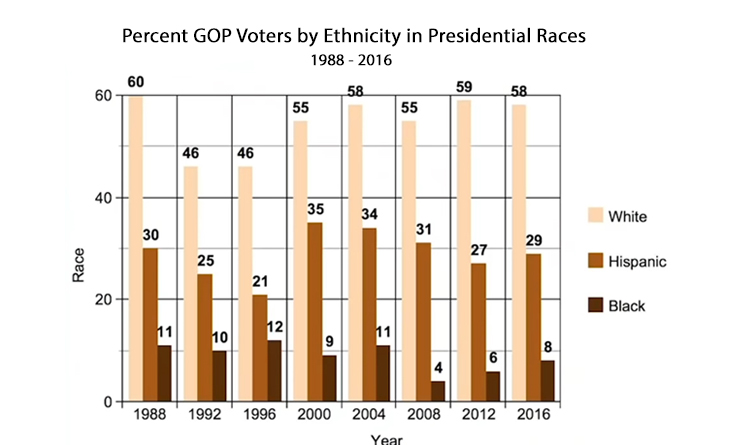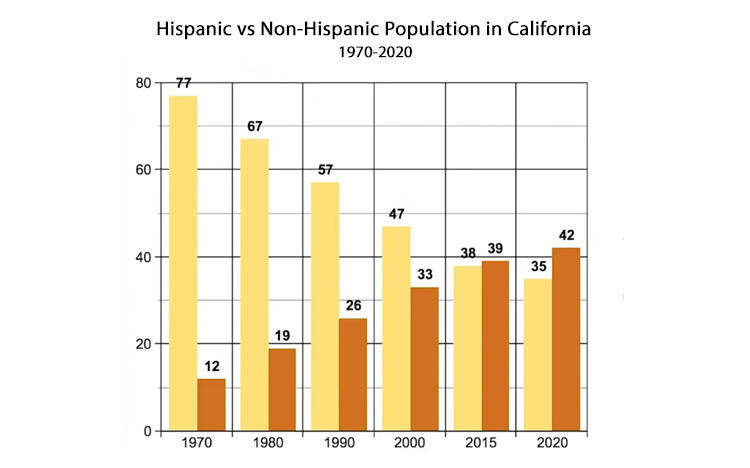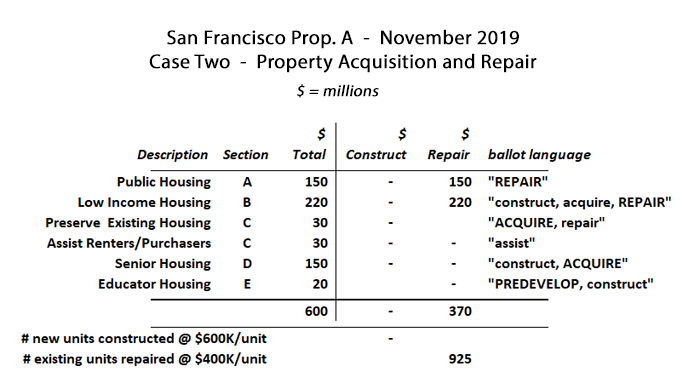How Federal Intervention Can Ease California’s Homeless Crisis
On October 24, Curbed LA reported that the Los Angeles City Council unanimously voted to provide an additional $24 million in homeless housing bonds to “repurpose a building (207) on the Veterans Affairs campus in West Los Angeles for housing for veterans.” According to the article, the rehabilitated building would provide 59 units of permanent supportive housing for homeless and chronically homeless senior Veterans.”
According to Ryan Thompson, writing for VeniceUpdate.com, the developer’s budget for this rehab project is $54.6 million, which equates to a per unit cost of $926,000. In his write-up, Thompson not only questions the astronomical per unit price tag, but the entire process whereby these contracts were awarded and how the designated developers were selected. It warrants close reading.
Spending up to one million dollars per unit to not even create new housing, but to upgrade an existing structure, is not an outlier. These astronomical costs are typical. In Venice Beach, a new structure being proposed to accommodate homeless and low income residents is budgeted, including the value of the land, at over $200 million, in order to create 140 new apartment units. That’s a cost of $1.4 million per unit.
In order to assist the homeless, in 2016, Los Angeles voters approved Prop. HHH, authorizing $1.2 billion to construct “supportive housing.” As reported by the Los Angeles Times, the total project cost, on average, for the few thousand units that will eventually get built is $550,000 each.
Up north, the San Francisco Bay Area’s local politicians are equally adept at spending unbelievable sums of money to create housing for the homeless and for low income families. The City of Oakland provides a typical example, the “Estrella Vista” affordable housing project, wherein 87 housing units were constructed at a cost of $64 million, which equates to $736,000 per unit.
And then there’s San Francisco’s Prop. A, set to be voted on November 5th. This $600 million bond will be used to construct low income housing, but a close analysis of the bond estimates that it will eventually fund, at most, 650 units of new housing and 450 units of rehabilitated existing housing.
Why are our public officials spending a half-million per unit, or more, to build housing units for homeless and low income families in California? How on earth do they think they will ever solve California’s homeless crisis, when they’re unable spend less than a half-million dollars each, to get a roof over someone’s head?
A Crippling Assortment of Laws and Regulations Have Enabled Corruption Instead of Cures
The San Francisco Bay Area and Los Angeles County host, between them, well over 100,000 of California’s estimated 130,000 homeless. And in both of those metros, local government policies have utterly failed. This failure is partly because local elected officials are hampered by state laws which make it nearly impossible to incarcerate petty thieves and drug addicts, or institutionalize the mentally ill, and court rulings that prohibit breaking up homeless encampments unless these homeless can be provided free and permanent “supportive housing.”
The state and federal governments have even mandated that providing “housing first,” and getting every homeless person under a roof prior to any allocations of funds for treatment to overcome drug addiction or manage mental illness, is a condition of receiving government funds to help the homeless.
As if these laws and court rulings that have made homeless populations unmanageable weren’t enough, California’s state legislators have crippled the ability of developers to cost effectively construct any type of housing. State laws designed to prevent “sprawl” have caused land prices within cities to skyrocket. California’s environmental laws, most notably CEQA (the California Environmental Quality Act), require a dizzying, time consuming and expensive, seemingly endless array of reports from developers seeking project approvals. There are literally hundreds of various applications and fees that developers have to file with dozens of state and local agencies, and often these agencies will take months if not years to process the applications.
But instead of challenging these laws, local elected officials have used them as an excuse to engage in one of the most corrupt misuses of government funds in American history. Without first changing these laws, the problem cannot be fixed. But a special interest movement has been created to spend the money anyway. This alliance of special interests constitutes what has now become a Homeless Industrial Complex, comprised of government bureaucracies, homeless advocacy groups operating through nonprofit entities, and large government contractors, especially construction companies and land development firms.
It is Time for the Federal Government to Get Involved in California’s Homeless Crisis
An executive order involving several federal agencies could launch a coordinated effort to get California’s homeless crisis under control. Federal action would not solve the homeless crisis overnight, but it would prevent something truly catastrophic occurring such as a disease epidemic, and it would set the stage for Californians more swiftly implementing permanent solutions, for which there currently is no end in sight.
For example, the IRS could reform the laws governing nonprofits to curb the legalized waste of billions that pour into what have become special interest behemoths.
The SEC could classify the taxpayer as having investor rights, in a long-overdue move that would make it a lot more difficult for public projects to squander public funds.
The SEC could also require consultants to public agencies to register as financial advisers and be subject to the same restrictions on political donations that govern these consultants in the private sector.
The Justice Dept. could investigate some of the more egregious wasteful projects allegedly launched to help the homeless to possibly uncover cases of collusion or racketeering.
The Justice Dept. could also send in DEA agents to break up the criminal gangs and drug traffickers who exploit California’s lenient drug laws and hide among the homeless encampments.
The Dept. of Housing and Urban Development could reform the Low Income Tax Credit program to put a cap on per unit costs for housing projects to qualify. They could repeal the disastrous “housing first” mandate that prevents homeless programs from prioritizing treatment equally to constructing shelters.
The Dept. of Education could get more aggressive against the teachers union which resists competition in K-12 education, and is consequently responsible for thousands of students graduating into homelessness instead of productive lives.
The Centers for Disease Control could declare a health emergency and sweep through the homeless encampments, cleaning up the trash and human excrement.
The EPA could participate in that effort by declaring – quite accurately – homeless encampments to be Brownfields, in order to save California’s soil, water, and runoff to the ocean.
The Dept. of Labor could implement an executive order preventing Project Labor Agreements from being used to inflate the cost of housing projects, as if with the shortage of construction laborers in California, there is any need for PLAs.
And the Dept. of Veterans Affairs could house homeless veterans on unused sections of California’s abundant military bases. For less than $926,000 per unit!
If these recommendations were implemented, California’s homeless crisis would quickly improve. Criminal drug traffickers would be looking over their shoulders. The CDC and EPA would declare an emergency and clean up homeless encampments. Homeless veterans would find immediate shelter. And the power of the Homeless Industrial Complex, a special interest movement that has been enriched by going slow and overspending on everything, would be shaken to its foundations.
Nonprofits would no longer be able to legally squander funds intended to help the homeless. Taxpayers would have the same rights as private sector investors, making it less likely public agencies could waste money on projects. Federal funds would be contingent on cost-effective projects. Unions would have to compete to participate in projects, and with the shortage of construction workers in California and the many projects awaiting funds, that would not be a hardship to them. Over time, maybe a sustained effort by the Dept. of Education to introduce competition to the monopolistic union controlled public schools might even change both the aptitude and the attitude of students graduating into California’s workforce.
Eventually, maybe the other root problem connected to homelessness, prohibitively expensive housing, could get addressed. Not only through many of the reforms proposed here, which could apply to low income housing as easily as to permanent supportive housing, but through a loosening of the requirements to run building permit applications through an obscene gaggle of local and state agencies. Projects that take as little as 20 days in Texas to get approved, and at most 20 months in most states, can take up to 20 years in California. Small wonder there’s a housing shortage. These countless applications with their exorbitant fees and endless delays constitute criminal negligence and naked, insatiable public sector greed, masquerading as a public service.
California’s policymakers are puppets of special interests. Those special interests include their own bureaucracies, which are controlled by public sector unions that gain membership dues and power whenever a public sector challenge worsens. Similarly, the other special interest members of the Homeless Industrial Complex, developers and nonprofit corporations, gain profits and revenues when the homeless crisis worsens.
It is time for the federal government to take decisive action where our public servants on the state and local level have failed. It must never be forgotten that this failure victimizes not only the taxpayers and the members of the public who live in areas overran with homeless people. It also victimizes the homeless themselves, who are not getting shelter, and who are not getting treatment.
The power of the special interests who have turned homelessness into a self-serving, taxpayer funded industry, must be broken.
An executive order from President Trump declaring a state of emergency, followed up by a coordinated interagency response, could get California’s homeless crisis under control. And it could happen in months instead of interminable years.
This article originally appeared in the California Globe.
* * *

Edward Ring is a contributing editor and senior fellow with the California Policy Center, which he co-founded in 2013 and served as its first president. He is also a senior fellow with the Center for American Greatness, and a regular contributor to the California Globe. His work has appeared in the Los Angeles Times, the Wall Street Journal, the Economist, Forbes, and other media outlets.
To help support more content and policy analysis like this, please click here.





